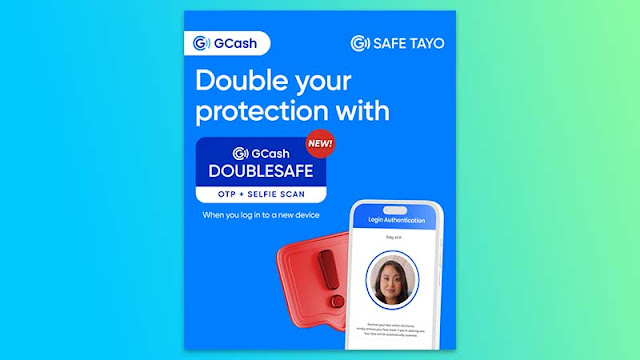
GCash announced that starting March 2023, the e-wallet service will require all users to activate DoubleSafe to add an extra layer of security to their accounts when logging in to a new device. In this guide, you'll learn more about the security feature and how to use it.
What is DoubleSafe by GCash?
DoubleSafe is a security feature of GCash that prevents unauthorized transactions via a selfie scan (for fully verified users) or additional OTP (for non-verified users) to ensure you are the only one with access to your GCash account on any device.
Also read:
This feature will be activated for every first log-in to a new device to ensure the continued protection of its users. DoubleSafe uses facial recognition, which means that even if a user inadvertently shares their MPIN and OTP with fraudsters, their account can't be accessed from another device without scanning the owner's face – ultimately preventing account takeovers.
To recall, GCash first announced the "double authentication" security feature last year. And now it's called DoubleSafe. Prior to DoubleSafe, GCash already required two levels of authentication or 2-Factor Authentication. The first level of security is the OTP (One-time PIN), which is a unique number combination sent to the user's mobile number. The second level of authentication is the MPIN (Mobile PIN), which is a 4-digit passcode that should be known only by the customer or GCash owner.
How to link your device with GCash DoubleSafe?
Add a layer of protection to your GCash account via a selfie scan. Just follow these four easy steps to add an extra layer of protection to your account:
- Use another device with GCash and enter your GCash mobile number.
- Tap Send Code and enter the OTP you received via SMS.
- Enter your 4-digit MPIN.
- Take a selfie scan.

Notes:
- If you have a non-verified GCash account, you must enter an additional OTP after keying in your MPIN when you log in.
- If you have five failed attempts, you cannot access your GCash account for 24 hours. Please retry after 24 hours.
- If you use Biometrics for account log-in, the face scan will not appear. Use your MPIN to log in instead.
GCash GSafeTayo Campaign
In addition to the in-app security feature, DoubleSafe, GCash collaborates closely with the Philippine National Police Anti-Cybercrime Group (PNP-ACG) to pursue fraudsters and scammers. In 2022, this was formalized with the signature of a memorandum of agreement with PNP-ACG.
Moreover, GCash is stepping up its GSafeTayo campaign with a series of awareness and education materials that will help customers spot and avoid fake sellers, suspicious links, and other typical scams.
Customers are equipped to fight alongside GCash for true account security through the campaign.
The campaign focuses on educating the public on how to avoid becoming a victim of a scam:
- Don't open unfamiliar links. Scammers frequently send messages containing links, luring recipients with the promise of lucrative "prizes" or employment opportunities. In response, GCash has discontinued sending links via SMS, email, and other mobile messaging apps and instead moved transaction confirmation messages to the in-app inbox.
- Never share personal information. It is common practice for scammers to pose as GCash representatives over the phone in order to obtain personal user information. GCash will never request MPINs and OTPs from its customers and will only contact them through official channels.
- Double-check before buying. Fake online shops and sellers offer deals that are too good to be true in order to deceive consumers into purchasing their products. GCash advises double-checking online offers and reading reviews to verify their authenticity.
How to report a scam in GCash?
To report scams and other suspicious activities, you can go to the GCash Help Center thru the GCash app or at https://help.gcash.com, Chat with Gigi, and select "I want to report a scam."







0 Comments